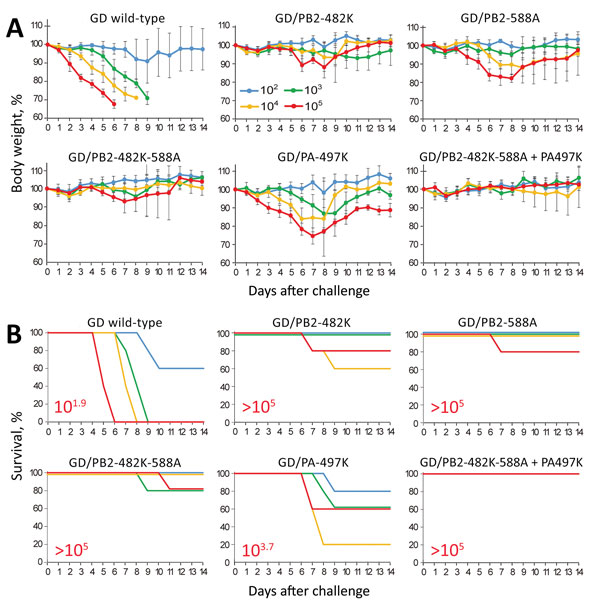Volume 24, Number 4—April 2018
Dispatch
Enhanced Replication of Highly Pathogenic Influenza A(H7N9) Virus in Humans
Figure 2

Figure 2. Virulence of wild-type and mutant highly pathogenic influenza A(H7N9) virus GD viruses in mice. Five mice per group were intranasally inoculated with 102, 103, 104, or 105 PFU (each in 50 μL) of the indicated viruses. Body weight (A) and survival (B) were monitored daily for 14 days. A) The values represent the average body weight ± SD compared with the baseline weight from 5 mice. Two-way analysis of variance followed by a Dunnett test revealed that the body weight loss of mice infected with each mutant virus at any dose was significantly reduced compared with that of mice infected with GD wild-type virus (p<0.01). B) The 50% lethal doses for mice (in red) were calculated according to the Spearman-Karber method. Error bars indicate SD. GD, A/Guangdong/17SF003/2016; PA, polymerase acidic; PB, polymerase basic.
1These senior authors contributed equally to this article.